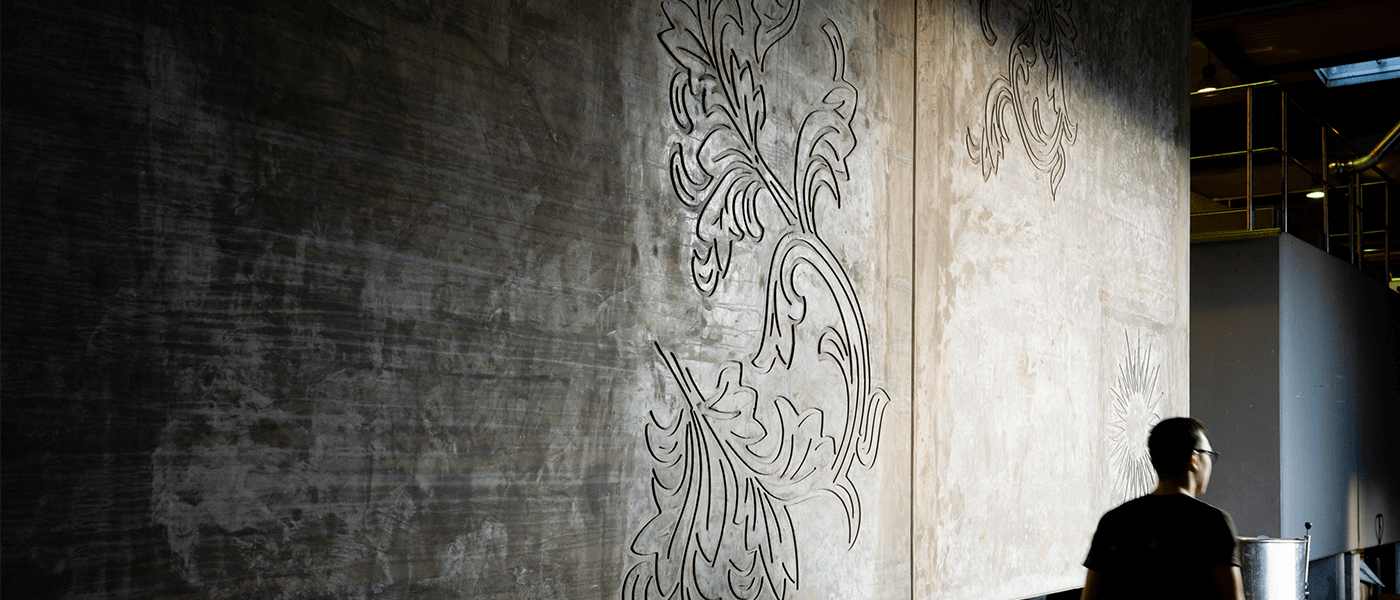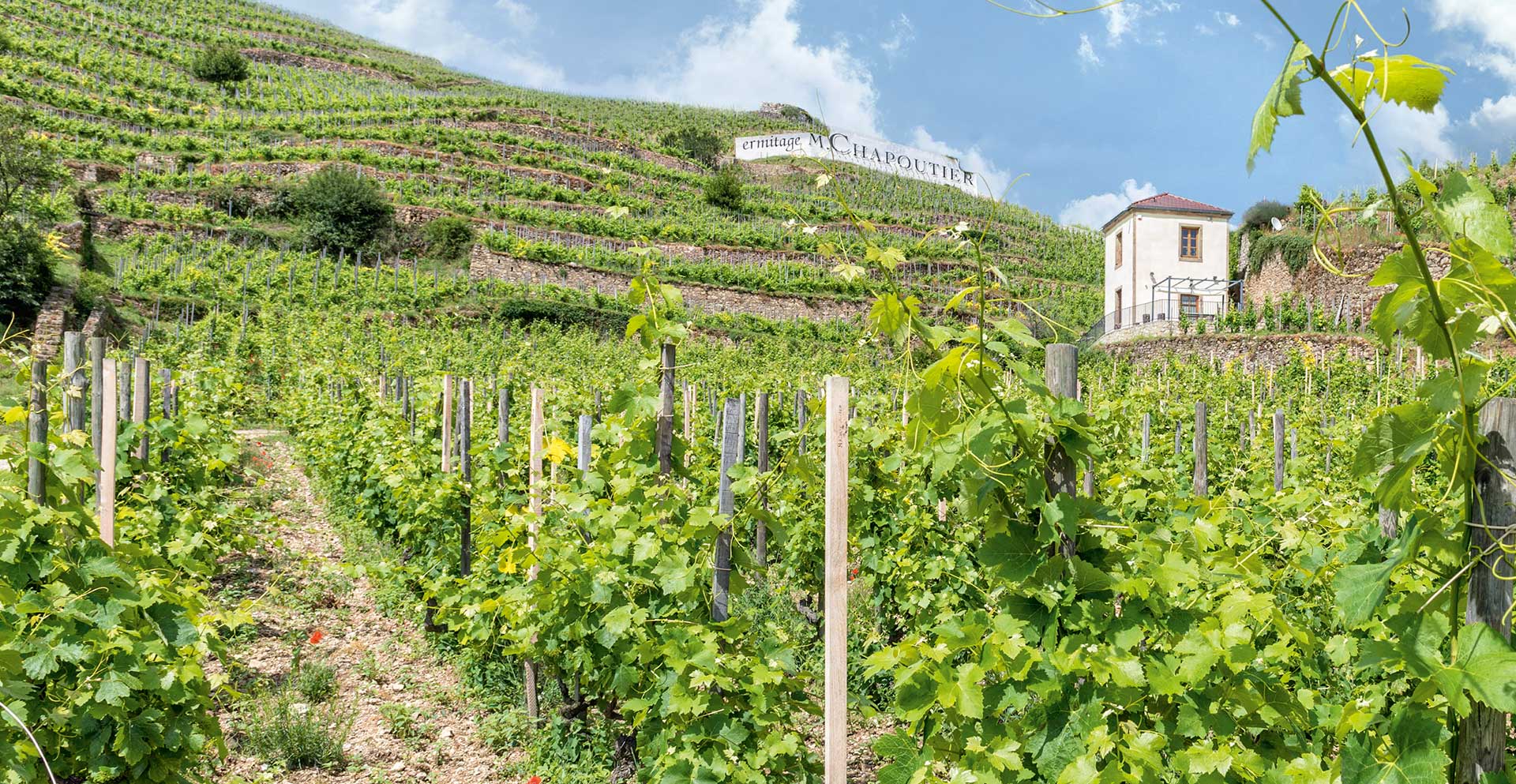L'élevage ou la recherche du juste équilibre
L'élevage ou la recherche du juste équilibre
in the wine cellar
19 March 2024

The last stage before blending and bottling, ageing is a decisive part of the wine's maturation cycle. Strategic choices are to be made between stainless steel or concrete vats, barrels or tuns...
The three objectives of ageing:
- Allow the wine to age, slowly developing its aromas.
- Purify the wine of its deposits by different forms of racking.
- Prepare the blends through a process of regular tastings.
Concrete vats:
Michel Chapoutier's grandfather's old winery was already using concrete vats. Despite the trend for stainless steel vats in place of concrete ones, Michel chose to keep the latter, considering that they deliver the best mouthfeel for the House's finest wines. This is particularly true of some grape varieties, such as the Grenache of Châteauneuf-du-Pape, which are sensitive to oxidation. For them, concrete vats are the most appropriate choice, as their porosity allows the wine to oxygenate slightly. And the proof of the pudding is in the eating: many winegrowers have since abandoned stainless steel and gone back to concrete.
Raw concrete tanks offer very good thermal inertia (hot/cold regulation), which promotes the stability of the wine. Raw concrete absorbs the initial calories and can slowly release them once fermentation is complete.
Stainless steel vats are the most common choice for ageing wine. Stainless steel is a non-porous, neutral material that has no impact on the wine. It can also be used to store wine that has finished maturing.
Wooden barrels (228L), the tannins in the wood bring complex aromas, which need to be regulated to avoid the woody aspect dominating. At M. CHAPOUTIER, a barrel is used for only four or five harvests befor being renewed. This ensures a high level of exchange between the wine and the wood.
Tuns (10HL minimum) are much larger than barrels, and allow less exchange with the wood and oxygen. As a result, the aromas are more supple and mellow.
Aromatic symphonies and oxygen:
Temperature control interferes with the indigenous yeasts (from their natural environment) present in the vat: each yeast will find a temperature that allows it to work optimally, to express itself fully and to contribute its own signature. The result is a veritable aromatic symphony.
In addition, M. CHAPOUTIER is currently testing maturing in muid, 12 hectolitres tuns. The larger the container, the less exchange there is between the wine and the oxygen. Grenache is better suited to this than in a barrel, where it would be subject to oxidative changes, making it unsuitable for the degree of finesse sought by the Maison. Syrah, on the other hand, needs a little oxygen during the ageing phase in the case of wines to lay down.
Michel Chapoutier's grandfather's old winery was already using concrete vats. Despite the trend for stainless steel vats in place of concrete ones, Michel chose to keep the latter, considering that they deliver the best mouthfeel for the House's finest wines. This is particularly true of some grape varieties, such as the Grenache of Châteauneuf-du-Pape, which are sensitive to oxidation. For them, concrete vats are the most appropriate choice, as their porosity allows the wine to oxygenate slightly. And the proof of the pudding is in the eating: many winegrowers have since abandoned stainless steel and gone back to concrete.
Raw concrete tanks offer very good thermal inertia (hot/cold regulation), which promotes the stability of the wine. Raw concrete absorbs the initial calories and can slowly release them once fermentation is complete.
Stainless steel vats are the most common choice for ageing wine. Stainless steel is a non-porous, neutral material that has no impact on the wine. It can also be used to store wine that has finished maturing.
Wooden barrels (228L), the tannins in the wood bring complex aromas, which need to be regulated to avoid the woody aspect dominating. At M. CHAPOUTIER, a barrel is used for only four or five harvests befor being renewed. This ensures a high level of exchange between the wine and the wood.
Tuns (10HL minimum) are much larger than barrels, and allow less exchange with the wood and oxygen. As a result, the aromas are more supple and mellow.
Aromatic symphonies and oxygen:
Temperature control interferes with the indigenous yeasts (from their natural environment) present in the vat: each yeast will find a temperature that allows it to work optimally, to express itself fully and to contribute its own signature. The result is a veritable aromatic symphony.
In addition, M. CHAPOUTIER is currently testing maturing in muid, 12 hectolitres tuns. The larger the container, the less exchange there is between the wine and the oxygen. Grenache is better suited to this than in a barrel, where it would be subject to oxidative changes, making it unsuitable for the degree of finesse sought by the Maison. Syrah, on the other hand, needs a little oxygen during the ageing phase in the case of wines to lay down.


